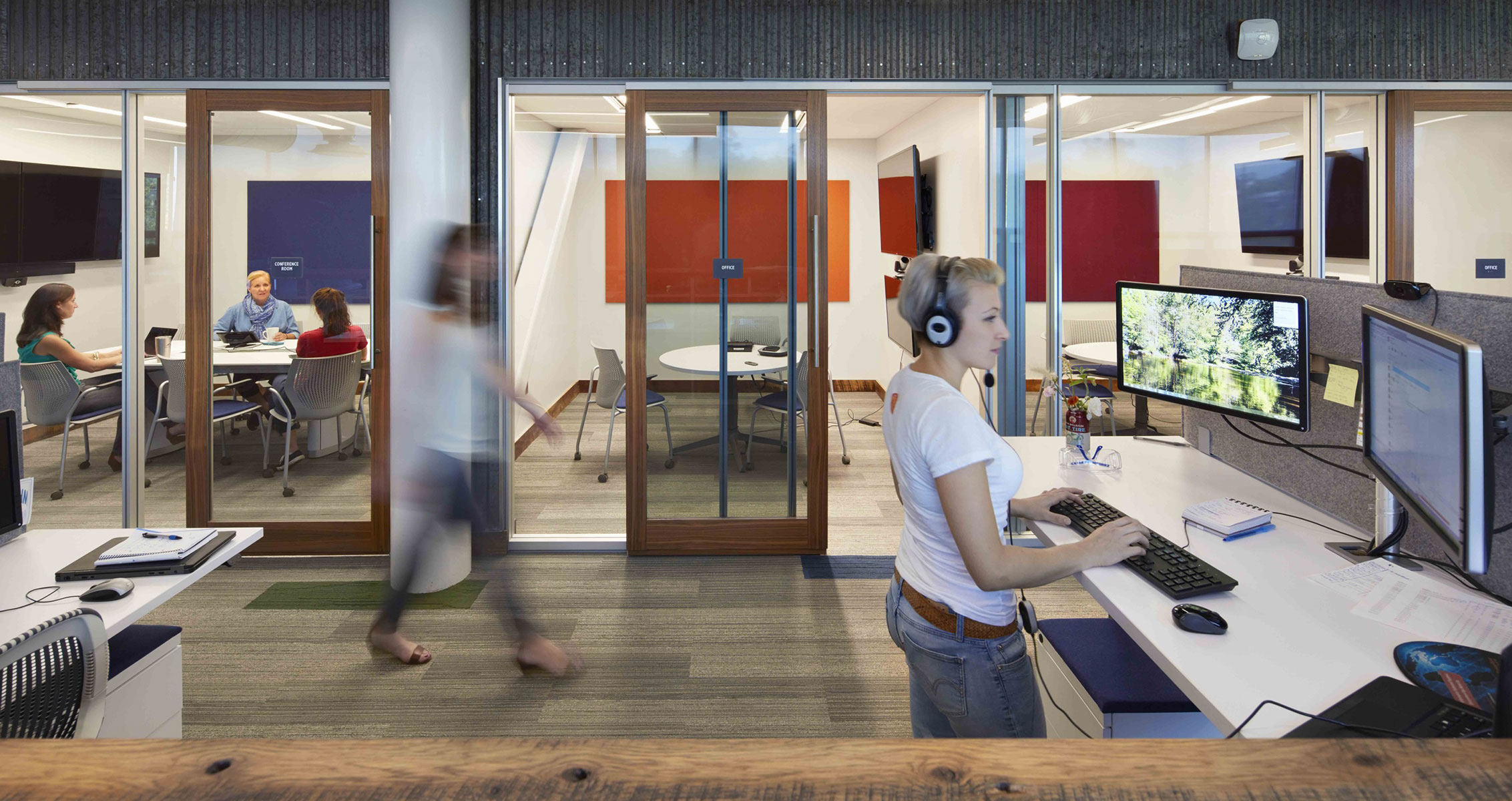A new study finds that adjustable workstations – commonly known as “sit-stand desks” – may be beneficial in reducing sedentary behavior and supporting health outside the workplace. Study results were recently published in the International Journal of Workplace Health Management (IJWHM). Funded by the American Society of Interior Designers (ASID) Foundation’s Transform grant, interim study results were announced on the ASID website last year. The final study, “Stand Up to Work: Assessing the Health Impacts of Adjustable Workstations,” found that sit-stand desks are linked to increased productivity, better mental concentration, and improved overall health in employees who used sit-stand desks over a 12-month period. Most employees reported that the sit-stand desks had a positive impact on their health outside the workplace.
“What makes this study different from any other sit-stand desk study – which is also what made it worthy of peer review and publication – is the combination of its long duration and its inclusion of complementary qualitative data,” says Lead Researcher Dr. Elizabeth Garland, associate professor at the Icahn School of Medicine at Mount Sinai. “Most studies conclude after just a few months. Ours lasted a full year. This allowed us to assess both the objective and subjective health impacts of sit-stand desk usage, from perceived stress and well-being to measurable changes in sedentary behavior.”
Study Highlights
Garland collaborated with a multidisciplinary team of researchers from the Center for Active Design (CfAD), global architecture and design firm Perkins&Will, and furniture manufacturer Steelcase to carry out the study. Perkins&Will and Steelcase are both committed to advancing healthy buildings and products as Advisory Board members and Champions of Fitwel, a healthy building certification operated by CfAD.
The team evaluated sedentary behavior changes in office workers who received adjustable workstations that allowed them to shift between standing and sitting, and compared their behavior to that of workers with traditional desks. Half of the participants – randomly selected from one floor of Perkins&Will’s Atlanta studio – received Steelcase adjustable workstations, while participants on other floors maintained traditional desks. Polling measured sedentary behavior, and participants reported perceived stress and ongoing behavioral changes before installation and at three months, six months, and 12 months after installation. Both qualitative and quantitative data were collected and analyzed.
Compared with participants using traditional desks, participants who received the adjustable workstations reported that, at both three months and six months after installation, they sat for significantly less time. In all, 47 percent of participants with AWS reported decline in upper back, shoulder, and neck discomfort. After twelve months, 88 percent of participants who received the adjustable workstations reported that they were convenient to use; 65 percent reported increased productivity; and 65 percent indicated that they positively impacted their health outside of the workplace. Participants with adjustable workstations also reported better concentration and would recommend them for their worksite.
“As a research-driven design firm that’s committed to health, well-being, and sustainability, ‘Stand Up to Work’ was a particularly important project for us,” says John Haymaker, director of research at Perkins&Will. “The results validate many of our workplace design decisions, and provide the concrete proof points that data-driven clients are looking for when choosing design solutions.”
“As the operator of the Fitwel Certification System, we see the continuous demand for research and data to support and drive the implementation of healthy design strategies,” says Abbie Watts, senior researcher at the Center for Active Design, “The ‘Stand Up to Work’ study is an important piece of research that grounds our workplace initiatives and contributes to the larger body of research that supports how we make the connection between health and the design of the built environment.”
“The health of any organization is dependent on the wellbeing of its most important asset – its employees,” said Lynne Sullivan, director of Steelcase Wellbeing consultants at Steelcase. “This study proves that adjustable workstations are an essential part of a workplace that considers the physical, cognitive and emotional wellbeing of its people.”
The published study can be downloaded here. An executive summary, including a review of the methodology and implications derived from the research, is available here.
